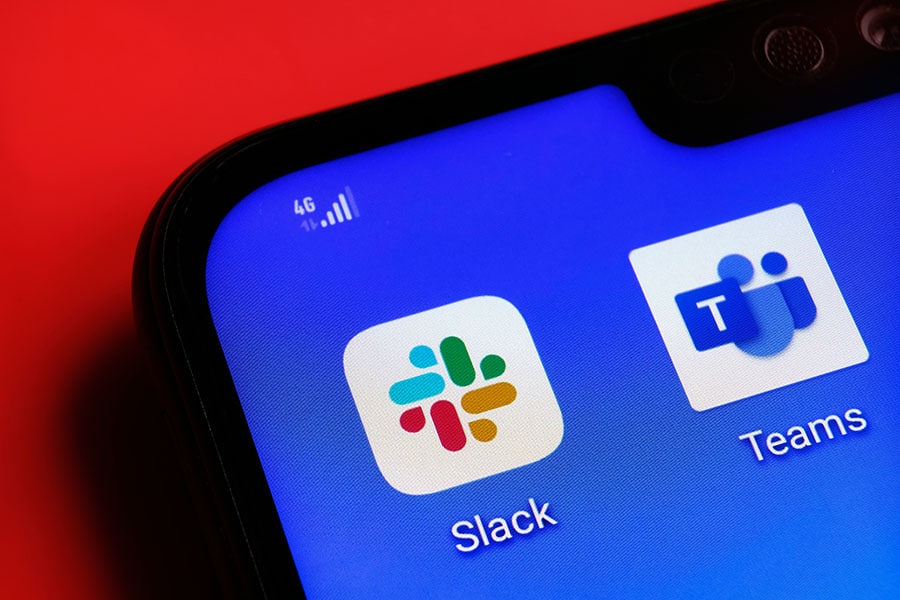
Free isn't always better: How Slack holds its own against Microsoft Teams
What will it take to win the collaboration app wars: massive scale or a loyal following? A case study by David Yoffie digs into the intense competition between Microsoft Teams and Salesforce's Slack
 Can these collaborative software platforms become an operating system for the office—the centerpiece of how we do work? That is open at this point. It’s the dream of both Microsoft and Salesforce.
Image: Shutterstock
Can these collaborative software platforms become an operating system for the office—the centerpiece of how we do work? That is open at this point. It’s the dream of both Microsoft and Salesforce.
Image: Shutterstock
When COVID-19 forced companies to send employees home two years ago, newly remote workers largely reconnected on two collaboration apps: Slack and Microsoft Teams.
The pandemic propelled Slack beyond its core following in the technology industry and piqued the interest of cloud computing giant Salesforce, which acquired the firm in 2021. Microsoft, meanwhile, was finally able to draw users to Teams, the free business communication platform it introduced in 2017 as part of Office 365.
Even with Salesforce’s extra muscle, Slack’s executives have puzzled over how to compete with a free rival, a new Harvard Business School case study illustrates. Now, a David-and-Goliath contest is underway, and the outcome could change how colleagues communicate, especially as remote work becomes a fixture in business. The winner is anyone’s guess, says HBS Professor David Yoffie, who co-wrote the case.
“It is a dramatic story,” says Yoffie, the Max and Doris Starr Professor of International Business and Administration. “Can these collaborative software platforms become an operating system for the office—the centerpiece of how we do work? That is open at this point. It’s the dream of both Microsoft and Salesforce.”
Yoffie and a group of MBA students at HBS used public information to analyze the competition in the case study Collaboration Wars: Slack vs. Microsoft Teams. His co-authors include 2021 graduates Kriti Gupta, Mehek Punatar, Poonam Sacheti, and Poorvi Vijay.
This article was provided with permission from Harvard Business School Working Knowledge.







